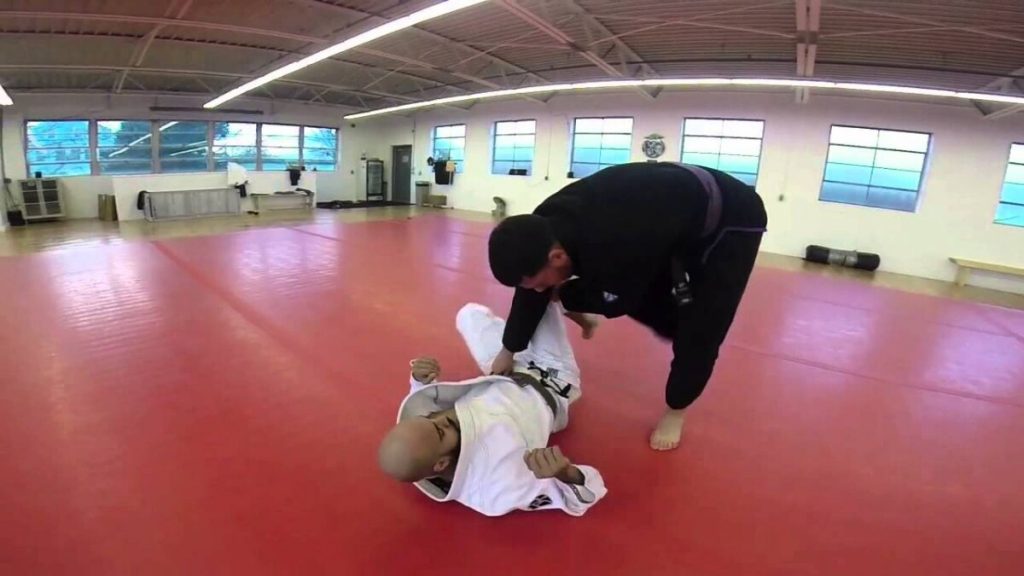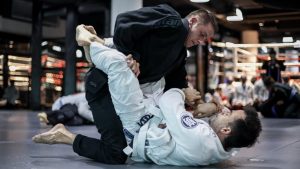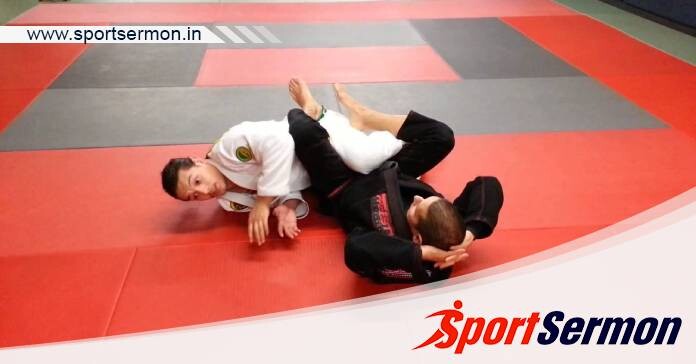Footwork Is Crucial in BJJ: Ground combat is a common association of Brazilian Jiu-Jitsu with martial arts. This is somewhat accurate because the majority of BJJ practice takes place on the mat through grappling. All BJJ practitioners should focus on using appropriate footwork while standing up, as it is a crucial factor that is often overlooked. We’ll go over the fundamentals of Jiu-Jitsu footwork, why footwork is crucial in BJJ, along with some drills to help you become more fluid on the mat.
Grappling Martial Arts Footwork
The difference between keeping a strong foundation and being swept or surrendered may sometimes be determined by one’s footwork. Being in the best posture possible at all times is crucial in a combat sport like BJJ since it affects your position when you shift into offensive and defensive situations.
Anyone who can move freely will be able to do any sport more effectively. This implies that you can skillfully move in and out of your opponent’s threats and shift into positions where you may gain the upper hand in BJJ. Even basic movements like obtaining the collar knot take a certain amount of footwork knowledge. As you close in on your adversary, you must reduce their opportunity to attack. Because of this, using your techniques on the mats successfully depends on having solid footwork.
You might also be interested in reading this: A Comprehensive Guide On BJJ Foot Sweeps
Solo Drills for Judo and BJJ Footwork

The SA Judo Academy YouTube channel offers ten solo workouts that you may do right now. The great thing about solo exercises is that you can perform them almost anywhere, as long as you have a reasonably large area and some tape to outline the floor.
The single-leg hop drill is the initial exercise when you follow the floor’s markers. Enhancing coordination and explosive strength is beneficial for grappling.
The shadow Uchikomi is the second drill. Repetition training, or uchikomi, is a traditional training method for improving skill and situational awareness. Step forward at an angle with your first foot, then pivot and turn your body around with the same foot. On both sides, repeat this many times.
A more advanced variant of the second drill is the third drill. After finishing a turn, you switch up your movements this time. This is a great exercise to increase both sides’ lateral mobility.
The fundamental foot sweep drill is the fourth exercise. Step backwards at an angle from the starting position, then sweep your imagined opponent with your other leg.
Using the straight step, this foot sweep practice is the sixth one. Step forward straight from the staggered stance, then extend your rear leg in response. Using your front leg, perform an inside sweep by starting from the inside and moving outside.
Throws like the Uchi Mata benefit from the seventh drill. Pulling your imagined opponent higher, take a diagonal stride with your front leg from the staggered posture. Step next, planting your back leg close to where you started. To do the Uchi Mata, turn now and raise your leg.
Throws such as the Tai Otoshi can benefit from the eighth drill. Take a step forward while drawing your opponent up from the staggered posture. To finish the practice, flip your trail leg into a backstep and sweep your front leg sideways.
The twisting squat, which is useful for moves like the Seoi Nage, is the ninth drill. To begin, squat down while supporting your weight on the balls of your feet. Follow the straight line in front of you, jumping and turning as you go. When you execute this exercise, make sure your core remains braced.
The blocking throw drill is the final exercise. As you raise and block your opponent’s leg, take an angled front stride with your trail leg and land on a straight line with your front leg from the staggered posture.
BJJ Partner Drills Using Footwork

Adam Wardziński, a black belt contender, walks you through five footwork workouts with a partner. If you combine these activities with your usual training, you can improve your footwork.
The tornando guard pass from the open guard is the first drill. Take hold of your training partner’s trousers at the knee, pull their legs towards your chest and execute a tornado pass that ends in a knee on the side control or belly. This drill may be chained by starting from one side.
Similar to the previous practice, the second one involves controlling the knee with just one hand. Using your same side arm, grab their pants by the knee and shove them out of the way as you shift to the side.
When both feet of your training partner are on the mat, you can do a guard passing drill in the third drill. Grasp their knee with one hand while keeping the other on the mat close to their leg. Keep your grips and do a quick jump to go past the guard.
When both feet of your training partner are on the mat, you can do a guard passing drill in the third drill. Grasp their knee with one hand while keeping the other on the mat close to their leg. Keep your grips and do a quick jump to go past the guard.
Leg pummelled to leg drag from the reverse De La Riva guard (RDLR) is the fourth drill. Grasp your training partner’s trousers at the knee from the RDLR, pound your leg out to the outside, and execute the leg drag while holding onto your grips. This is a potent counter against the bothersome De La Riva guard in reverse.
The X Pass from the reverse De La Riva guard is the last drill. This is a great substitute for the leg pummelled-to-drag technique if you are unable to do it. As you shrink your base from the RDLR, grip your training partner’s trousers just below the knee. Step to the side and execute an X Pass by elevating your leg above the guard.
In summary
A crucial but sometimes overlooked aspect of Brazilian Jiu-Jitsu is footwork. By emphasising the value of footwork and applying these particular drills to your regular training, you may improve your general BJJ skills. So, this is how footwork is crucial in BJJ. Give them a try and share your thoughts with us!

